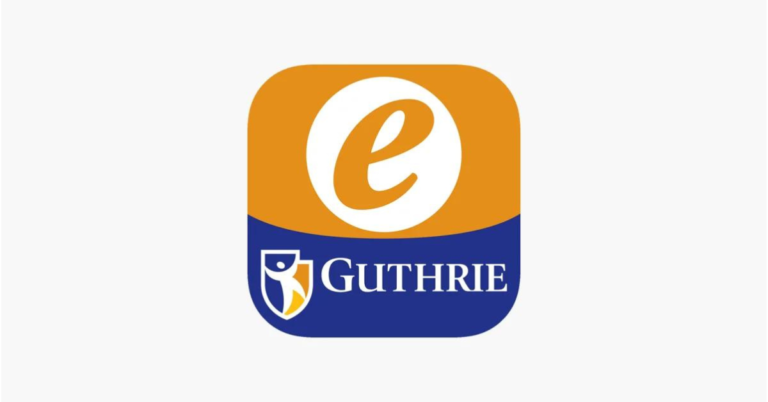In the rapidly evolving landscape of healthcare, technological advancements have revolutionized the way patient information is stored, accessed, and managed. One such innovation is the Electronic Health Record (EHR) system, which has transformed traditional paper-based records into digital formats, enabling healthcare providers to deliver more efficient and effective care. Among the various EHR systems available in the market, E. Guthrie’s EHR stands out for its unique features and functionalities. In this article, we will explore the advantages and challenges of E.Guthrie EHR system.
Understanding E. Guthrie’s Electronic Health Record System
E. Guthrie’s EHR system is a comprehensive electronic platform designed to streamline healthcare operations and improve patient outcomes. It offers a range of features tailored to meet the needs of healthcare providers, including:
Patient Information Management:
E. Guthrie’s EHR allows healthcare providers to securely store and access patient information, including medical history, treatment plans, medications, allergies, and demographic data.
The system employs robust encryption and access control measures to ensure the confidentiality and integrity of patient data.
Clinical Documentation:
With E. Guthrie’s EHR, clinicians can easily create, update, and share electronic clinical notes, eliminating the need for cumbersome paper-based documentation.
The system supports customizable templates and forms, enabling clinicians to capture relevant patient data efficiently.
Interoperability:
E. Guthrie’s EHR promotes interoperability by facilitating seamless exchange of health information between different healthcare systems and providers.
It supports industry-standard protocols such as HL7 and FHIR, allowing for interoperability with other EHR platforms and third-party applications.
Decision Support:
The EHR system includes built-in clinical decision support tools that provide evidence-based guidelines, alerts, and reminders to assist healthcare providers in making informed decisions.
These decision support features help improve clinical outcomes, reduce medical errors, and enhance patient safety.
Telehealth Integration:
E. Guthrie’s EHR seamlessly integrates with telehealth platforms, enabling remote consultations, virtual visits, and remote monitoring of patients.
Telehealth integration enhances access to care, particularly in underserved areas, and improves patient convenience and satisfaction.
Advantages of E. Guthrie’s EHR System
E. Guthrie’s EHR system offers several advantages that contribute to improved healthcare delivery and patient outcomes:
Enhanced Efficiency:
By digitizing patient records and automating routine tasks, E. Guthrie’s EHR system streamlines healthcare workflows and reduces administrative burden on healthcare providers.
Clinicians can access patient information quickly and easily, leading to faster diagnosis and treatment decisions.
Improved Care Coordination:
The interoperability features of E. Guthrie’s EHR enable seamless communication and collaboration among healthcare providers, leading to better care coordination and continuity of care.
Care teams can share real-time updates and collaborate on treatment plans, resulting in more holistic and coordinated care for patients.
Better Patient Engagement:
E. Guthrie’s EHR system empowers patients to take an active role in their healthcare by providing access to their medical records, lab results, and treatment plans.
Patients can communicate securely with their healthcare providers, schedule appointments, request prescription refills, and participate in telehealth visits, enhancing their engagement and satisfaction with the healthcare experience.
Data-Driven Insights:
E. Guthrie’s EHR generates comprehensive data analytics and reports that offer valuable insights into population health trends, disease prevalence, treatment outcomes, and resource utilization.
Healthcare organizations can leverage these insights to identify areas for improvement, implement targeted interventions, and optimize resource allocation, leading to better outcomes and cost savings.
Challenges of E. Guthrie’s EHR System
Despite its numerous benefits, E. Guthrie’s EHR system also presents several challenges that healthcare organizations must address:
Implementation Costs:
The initial cost of implementing E. Guthrie’s EHR system, including software licensing, hardware upgrades, and staff training, can be substantial for healthcare organizations, especially smaller practices and clinics.
Additionally, ongoing maintenance and support costs may strain the financial resources of healthcare providers over time.
User Adoption:
Transitioning from paper-based records to E. Guthrie EHR system requires healthcare providers to adapt to new workflows and technologies, which can be met with resistance and skepticism.
Ensuring adequate training and support for users is essential to promote successful adoption and utilization of the EHR system.
Interoperability Challenges:
While E.Guthrie EHR system supports interoperability with other healthcare systems, achieving seamless data exchange across disparate platforms remains a challenge due to differences in data standards, formats, and governance.
Interoperability barriers can hinder care coordination and information sharing among healthcare providers, leading to fragmented care and potential patient safety risks.
Data Security and Privacy:
Protecting the confidentiality and integrity of patient data is paramount in E.Guthrie EHR system, given the sensitive nature of healthcare information.
Healthcare organizations must implement robust security measures, such as encryption, access controls, and audit trails, to safeguard against data breaches and unauthorized access.
Regulatory Compliance:
E.Guthrie EHR system must comply with various regulatory requirements, including HIPAA (Health Insurance Portability and Accountability Act) and meaningful use criteria, to ensure the privacy, security, and interoperability of patient data.
Achieving and maintaining compliance with these regulations requires ongoing monitoring, auditing, and adherence to best practices in information governance.
Conclusion
E.Guthrie Electronic Health Record system offers numerous advantages, including enhanced efficiency, improved care coordination, better patient engagement, and data-driven insights. However, healthcare organizations must also address various challenges, such as implementation costs, user adoption, interoperability, data security, and regulatory compliance, to realize the full potential of the EHR system. By overcoming these challenges and leveraging the capabilities of E.Guthrie EHR system, healthcare providers can deliver high-quality, patient-centered care in today’s digital healthcare landscape.

